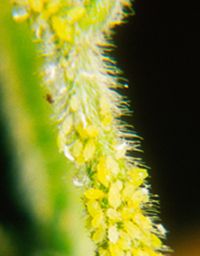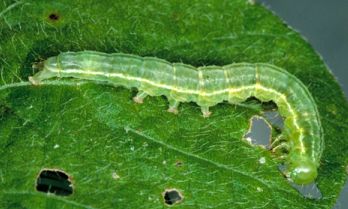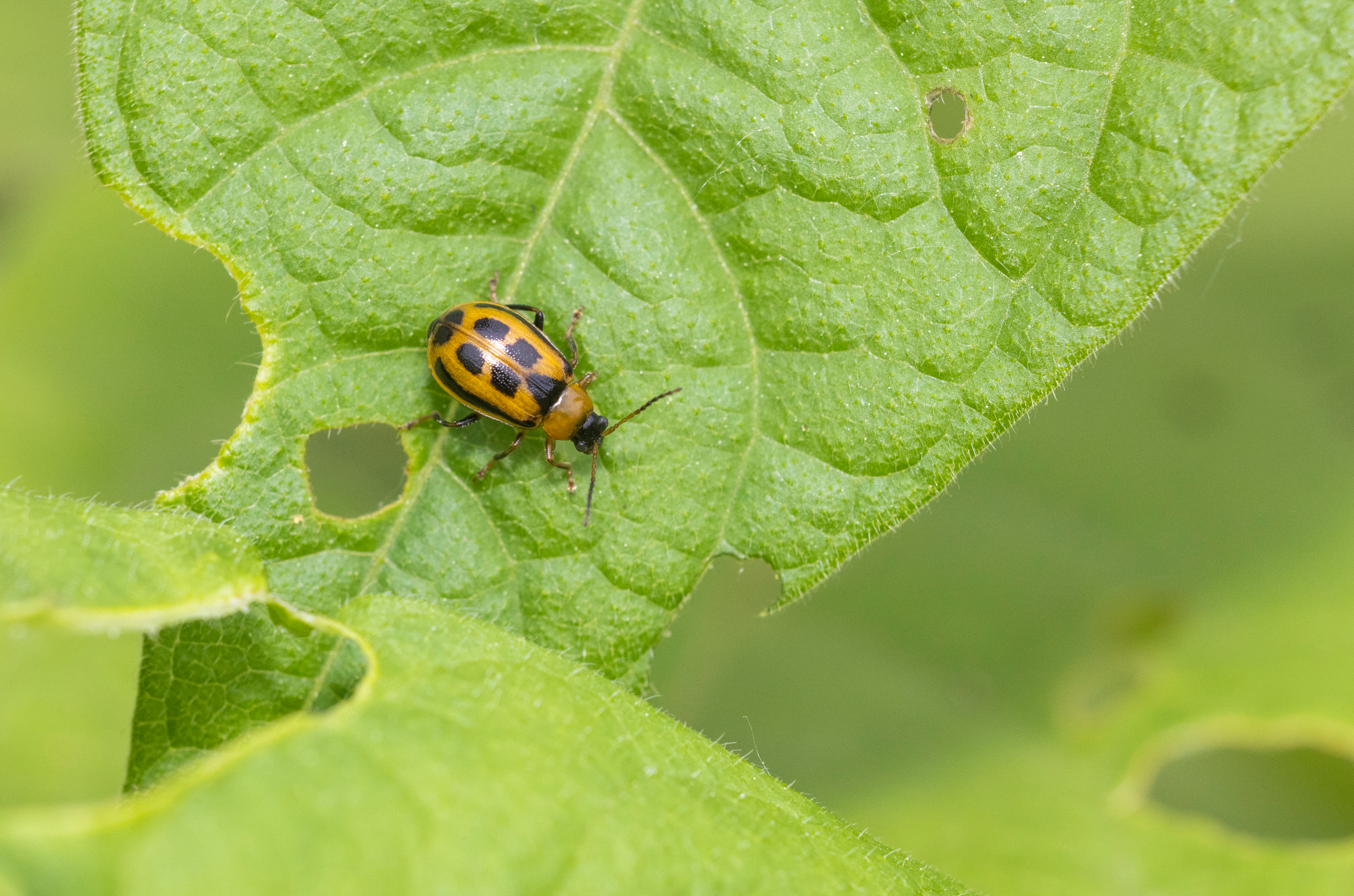Soybean Insect Management Resources
Nebraska Extension information, publications and insecticide guide for current soybean pest management information from UNL Extension.
- Soybean Insects I, EC 1574. Photos and identification and injury information for major insect pests of Nebraska soybean, including bean leaf beetle, soybean leafminer, green cloverworm, alfalfa caterpillar, cabbage looper, yellow woolybear, painted lady, and imported longhorned weevil.
- Soybean Insects II, EC 1575. Photos and identification and injury information for major insect pests of Nebraska soybean, including Dectes stem borer, soybean thrips, whiteflies, soybean aphid, potato leafhopper, twospotted spider mite, green stink bug and brown stink bug.
- Managing Soybean Defoliators, NebGuide G2259. Soybean leaf feeding is the most common type of soybean insect injury and can occur from emergence to harvest. When making soybean pest-management decisions, a crucial consideration is the size of the remaining leaf canopy and the stage of growth of the soybean plant. Learn more about scouting for estimating defoliation and potential effect on yield.
- Insecticides for Field Crops, table of current soybean pest management information. (The guide is excerpted from Nebraska Extension's Guide for Weed, Disease and Insect Management in Nebraska, EC130.)
- CropWatch News and the CropWatch News Archive: Search to find articles on identifying and treating soybean insects.
- Insect Almanac, a website of the UNL Department of Entomology.

Soybean Pests
Bean Leaf Beetle

Two generations of the bean leaf beetle occur annually in Nebraska, the first usually hatching in April. See this CropWatch article for further information.
Soybean Aphid

The soybean aphid (Aphis glycines) was introduced into the U.S. in 2000 and was first found in Nebraska in 2002. Yield losses of over 30% have been documented in northeast Nebraska and losses of lover 40% have occurred in other areas of the north central United States.
See these resources for further information on scouting for and managing soybean aphid:
- Biology and Economics of Recommendations for Insecticide-Based Management of Soybean Aphid, an article by university entomologists in Plant Health Progress, a peer-reviewed journal of applied plant health
- Regional Pest Alert for soybean aphids, distributed by USDA CSREES
- Soybean Aphid Management in Nebraska, G2063, soybean aphid identification, life cycle, and damage, as well as how to scout for and manage it. Photos of different stages and natural enemies are included.
- Soybean Aphid Speed Scouting Spreadsheet, EC1582. This Excel® spreadsheet can be downloaded and used when scouting for soybean aphids using the speed scouting method. It provides immediate information to make management decisions.
- Soybean Aphid Speed Scouting Mobile App in the iTunes store and Google Play stores.
- Soybean Aphid Biology and Management in Nebraska, by Tom Hunt, Extension Entomologist, NEREC Haskell Ag Lab, and Keith Jarvi, IPM Assistant, NEREC.
Webinars on the Plant Management Network
- Soybean Defoliation with Tom Hunt, UNL Extension Entomologist. Open access.
- Soybean Aphid Management Series: Update on Soybean Aphid Biological Control with Thelma T. Heidel-Baker, Iowa State University, July 2014. Fully open access
- Soybean Aphid Management Series: Management Using Neonicotinoid-Treated Seed with Christian Krupke, Purdue University, July 2014. Fully Open Access
- Soybean Aphid Management Series: Host Plant Resistance for Soybean Aphid with Erin Hodgson, Iowa State University, July 2014. Fully Open Access
Articles in the Journal of Integrated Pest Management
Biology of the Soybean Aphid, Aphis glycines (Hemiptera: Aphididae) in the United States
K. J. Tilmon, E. W. Hodgson, M. E. O'Neal, D. W. Ragsdale, Journal of Integrated Pest Management (2011) 2 (2): A1-A7 DOI: http://dx.doi.org/10.1603/IPM10016
Management Recommendations for Soybean Aphid (Hemiptera: Aphididae) in the United States
E. W. Hodgson, B. P. McCornack, K. Tilmon, J. J. Knodel in the Journal of Integrated Pest Management (2012) 3 (1): E1-E10 DOI: http://dx.doi.org/10.1603/IPM11019
Buyung A. R. Hadi, Jeffrey D. Bradshaw, Marlin E. Rice, John H. Hill in the Journal of Integrated Pest Management (2012) 3 (1): B1-B7 DOI: http://dx.doi.org/10.1603/IPM11007
Green Cloverworm

Distribution
- Green cloverworm is an important pest in the southern United States that migrates to northern states each spring.
Importance
- Larvae rarely reach pest status unless found in combination with other foliage-feeding caterpillars.
- Larvae serve as a valuable food source for beneficial insects and diseases.
Stem Borers
From NebGuide: Soybean Stem Borers in Nebraska (G2082)
Management
Cultural Controls
Several cultural practices can be implemented to reduce potential loss from stem borers.
- Weed control to reduce alternate hosts of soybean stem borers, such as wild sunflower, ragweed, and cocklebur, can help reduce soybean stem borer populations.
- Research at Kansas State University indicates that Dectes prefers commercial sunflower to soybeans. Sunflowers may be used as a trap crop to protect adjacent soybean fields.
- Research from North Carolina has found that burying borer-infested stubble after harvest can reduce soybean stem borer populations the next year; however, this practice may not be desirable where soil erosion is a concern.
- The adults are not strong fliers and crop rotation may reduce damage in areas where soybean acreage is limited.
- Field observations in Kansas suggest that early planted, short-season varieties may be more likely to have harvest losses from lodging. Longer season varieties mature later in the year, allowing more time to harvest before lodging is likely.
- Entomologists at Kansas State University have been studying this insect as a pest on soybeans for several years. They have not identified resistance in any commercially available soybean cultivars.
Chemical Controls
Chemical treatment of larvae is ineffective because the larvae are in the stem; effective chemical control of the adults is difficult due to the extended adult emergence period. Research in Kansas indicates that multiple foliar insecticide applications are needed to significantly reduce adult populations and larval injury, and may not be economically justified unless harvest is late and lodging losses are high.
Recommendations for Harvest
Fields with a history of injury or with injury symptoms this year should be carefully watched during August and September. Fields with extensive stalk tunneling (greater than 50 percent of plants) by the soybean stem borer are most at risk for lodging and harvest losses, depending on weather conditions. Those fields should be targeted for harvest first to minimize harvest losses due to soybean stem borer injury. In the absence of lodging losses, this insect does not usually cause noticeable yield reductions.
